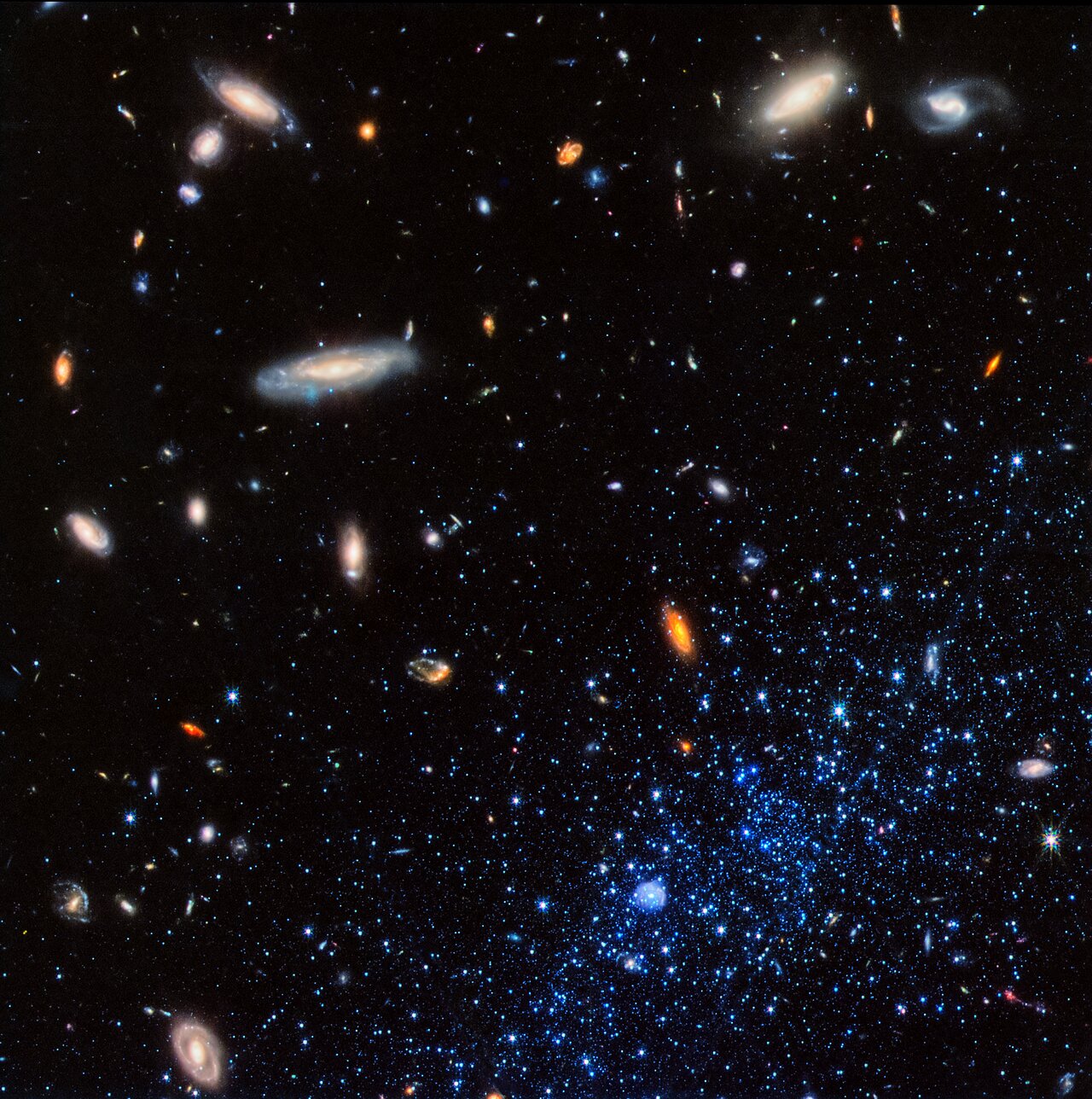About the Object
| Name: | Leo P | |
|---|---|---|
| Distance: |
5 million light years | |
| Constellation: | Leo | |
| Category: | Galaxies NIRCam | |
Coordinates
| Position (RA): | 10 21 46.18 |
|---|---|
| Position (Dec): | 18° 5' 30.41" |
| Field of view: | 1.03 x 1.03 arcminutes |
| Orientation: | North is 30.5° right of vertical |
Colours & filters
| Band | Wavelength | Telescope |
|---|---|---|
| Optical | 900 nm | James Webb Space Telescope NIRCam |
| Infrared | 1.5 μm | James Webb Space Telescope NIRCam |
| Infrared | 2.77 μm | James Webb Space Telescope NIRCam |
Leo P (NIRCam image)
This image from the NASA/ESA/CSA James Webb Space Telescope shows a portion of the Leo P dwarf galaxy (stars at lower right represented in blue). Leo P is a star-forming galaxy located about 5 million light-years away in the constellation Leo. A team of scientists collected data from about 15,000 stars in Leo P to deduce its star formation history. They determined that it went through three phases: an initial burst of star formation, a “pause” that lasted several billion years, and then a new round of star formation that is still continuing.
The image from Webb’s NIRCam (Near-Infrared Camera) combines infrared light at wavelengths of 0.9 microns (represented in blue), 1.5 microns (green), and 2.77 microns (red). The stars in Leo P appear blue in comparison to the background galaxies for several reasons. Young, massive stars that are common in star-forming galaxies are predominantly blue. Leo P also is extremely lacking in elements heavier than hydrogen and helium, and the resulting “metal-poor” stars tend to be bluer than Sun-like stars. A bubble-like structure at bottom center is a region of ionized hydrogen surrounding a hot, massive O-type star.
Credit:NASA, ESA, CSA, K. McQuinn (STScI), J. DePasquale (STScI)
About the Image
| Id: | LeoP | |
|---|---|---|
| Type: | Observation | |
| Release date: | 16 January 2025, 20:15 | |
| Size: | 2003 x 2016 px | |




